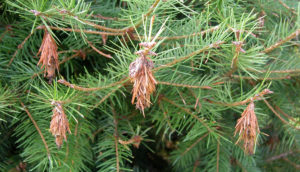Tree Fruit Phenology:
Tree fruit phenology is advanced based on historical observations. In southern counties some early blooming varieties are at pink to about 20% bloom. Redhaven was at bud swell on March 20, about 3 days earlier than the median observation date. Red Delicious was at 1/4″ green tip on March 21, about 10 days earlier than the median observation date. Plums are in bloom and Pears are at green cluster. [Read more…]

